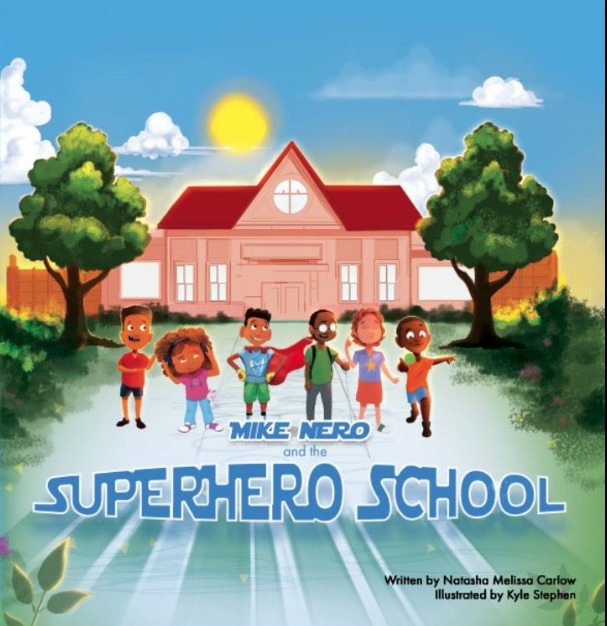Exploring Neurodiversity for Kids - Celebrate Learning Disability Week!
.png)
Welcome, families, to an exciting journey of understanding and celebrating neurodiversity! In honor of Learning Disability Week, we’re exploring the wonderful ways our brains work and learning about accepting and embracing our differences.
Did you know that everyone's brain is unique, just like a fingerprint? Some people's brains work differently, and that's okay! For example, some kids have autism or ADHD, which means their brains process information in extraordinary ways. Hi, It’s Me! I have ADHD demonstrates what it’s like to live in a world through the eyes of a child with ADHD. It’s a great resource to help kids with ADHD feel seen and understood, but also great to explain to others how their brain sees the world differently.
Celebrating Our Differences:
Neurodiversity encompasses a wide range of neurological differences that exist among individuals. One such neurodiversity is autism spectrum disorder (ASD), which manifests in unique ways across individuals, impacting communication, social interaction, and sensory processing. Attention deficit hyperactivity disorder (ADHD) is another neurodiversity characterized by challenges with attention, impulsivity, and hyperactivity. Dyslexia, a learning difference, affects reading and language processing. Additionally, there are various other neurodiverse conditions, such as Tourette syndrome, dyspraxia, and bipolar disorder. Each neurodiversity brings with it a distinct set of strengths, challenges, and perspectives, contributing to the rich tapestry of human experience. Embracing and understanding these differences is crucial for building an inclusive society that values the diverse ways in which individuals navigate the world.
Celebrating our differences and realizing that each person has their own special strengths and talents is imperative for us to grow as a community and help those around us. Plus, imagine how boring the world would be if everyone was the same! By embracing neurodiversity, we make the world a more interesting and vibrant place.
Neurodiversity in School:
Sometimes, kids with different ways of thinking face challenges in school. But guess what? We can help create inclusive classrooms for everyone! Teachers and classmates can support each other by being patient, understanding, and offering a helping hand. We're all in this together!
Neurodiversity in schools is a vital aspect of creating inclusive educational environments that cater to the diverse needs of all students. Recognizing and embracing students' unique strengths and challenges fosters a supportive and empowering learning atmosphere. By implementing inclusive practices, such as differentiated instruction, flexible assessments, and sensory-friendly classrooms, schools can accommodate neurodiverse learners effectively. Providing access to appropriate accommodations, assistive technologies, and specialized support services allows students with neurodiverse profiles to thrive academically and socially. Additionally, raising awareness and promoting acceptance of neurodiversity among teachers, staff, and students fosters empathy, understanding, and a culture of inclusion. Embracing neurodiversity in schools ensures that every student has equal opportunities to succeed and contribute their valuable perspectives to the learning community.
Neurodiversity in Everyday Life:
Neurodiversity doesn’t only impact children at school, but in our home lives as well. Whether our family members, friends, or neighbors are neurodiverse, we should always be kind and accepting of everyone's differences. Remember, our uniqueness is what makes us special!
Neurodiversity in the home is an important aspect of creating a nurturing and inclusive family environment. Recognizing and appreciating the unique neurological profiles of family members promotes understanding and acceptance. It involves embracing the strengths and challenges associated with various neurodiverse conditions and providing the necessary support and accommodations. Creating routines, structures, and sensory-friendly spaces can help individuals with different neurodivergent traits feel more comfortable and thrive. It is also crucial to foster open communication, empathy, and active listening within the family, allowing for mutual understanding and respect. By embracing neurodiversity in the home, families can create an environment where every member feels valued, supported, and celebrated for their individuality.
Being an Ally and Advocate:
Being an ally means not only being a friend but standing up for others. We can be allies for neurodiverse individuals by speaking out against bullying and discrimination. Let's be superheroes of kindness and make sure everyone feels included and loved. We see this reflected in Mike Nero and The Superhero School! Mike and his friends show us that children with special needs are unique and superheroes in their own ways!
There are some action steps you can take to advocate for neurodiverse individuals’ rights and inclusion. First and foremost, it is crucial to educate yourself about neurodiversity, learning about different conditions and understanding their unique challenges and strengths. Actively listen to the experiences and perspectives of neurodiverse individuals, valuing their insights and validating their feelings. Use inclusive language and avoid stigmatizing or derogatory terms. Promote acceptance and understanding within your social circles by challenging misconceptions and stereotypes. Support inclusive policies and initiatives that prioritize accessibility, accommodations, and equal opportunities for neurodiverse individuals. Amplify their voices by sharing their stories and advocating for their needs in educational, work, and community settings. Ultimately, being an ally means actively working to create a more inclusive society where neurodiverse individuals can fully participate and thrive.
The journey of understanding neurodiversity doesn't end here. Together, we can create a world that is more inclusive and accepting as we learn and grow together. Kindness, acceptance, and understanding are the keys to creating a better world for all. So, let's embrace our superpowers and embark on this incredible adventure of neurodiversity with our loved ones. Together, we can make a world where everyone feels valued and appreciated.
If these are values you want to share with your children, be sure to check out Mike Nero and the Superhero School & Hi, It’s Me, I Have ADHD, and add to your family's library on neurodiversity and inclusion!
Click here to gain access to these books' supplemental coloring pages for your child and continue the celebration of neurodiversity!

.png)

